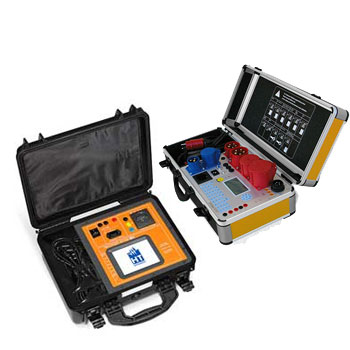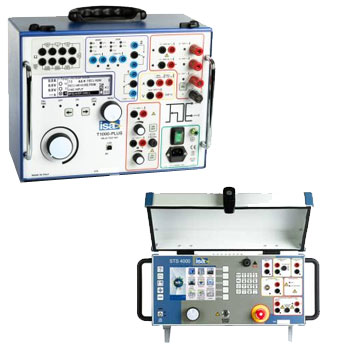
Water treatment and wastewater purification are essential processes to ensure water supply and environmental protection. One of the most important measurement parameters in these systems is flow rate, as it directly impacts the efficiency and control of facilities. This article provides a comprehensive overview of flow measurement technology in water treatment and wastewater plants.
Importance of Flow Measurement
Flow measurement is crucial for:
-
Monitoring the water cycle in treatment plants
-
Regulating chemical dosing
-
Controlling clarification basins and aeration systems
-
Ensuring compliance with legal regulations for wastewater discharge
Without precise measurement systems, water treatment plants could operate inefficiently, leading to increased costs and environmental impacts.
Flow Measurement Methods
There are various methods for flow measurement used in water treatment plants and wastewater facilities. The choice of the right method depends on factors such as medium, pipe diameter, temperature, and pressure.
1. Electromagnetic Flow Meters (EMF)
Principle of Operation: Electromagnetic flow meters use Faraday’s law of electromagnetic induction. When a conductive liquid flows through the measuring tube, a voltage is induced, which is proportional to the flow velocity.
Advantages:
-
High measurement accuracy
-
No moving parts, minimizing wear
-
Suitable for conductive media such as drinking water and wastewater
- Zero Up and Zero Down installation capabilities
- EPDM lining specifically for drinking water applications requiring special approvals
- NBR rubber liner for all water and wastewater applications
- Increased low flow accuracy for water leak detection
- Suitable for underground installation and permanent immersion (IP68) or underwater installation
- Integrated grounding electrodes - no grounding rings required for many applications
- Short delivery time
- Connected to the SITRANS FMT020 transmitter, it forms the magnetic flowmeter system SITRANS FM520: • SENSORPROMTM Technology provides an automatic upload of start-up settings and calibration data for easy commissioning • Plug & Play - allows easy on-site replacement and commissioning of the transmitter in just a few minutes • Mounting flexibility - compact or remote installation possible • Validated calibration ensures accurate flow measurement. Each Siemens flowmeter is calibrated in facilities that are individually accredited to ISO / IEC 17025. • Service and diagnostics - Designed to allow in-situ verification for easy performance check
 Datasheet Datasheet |
 User Manual User Manual |
- Simultaneously measure volumetric flow, flow velocity and electrical conductivity
- Cost-effective solution, backward compatible with older existing flowmeter sensors (MAG 5100W)
- Equipped with a large, rotatable, backlit 14-digit graphical display for optimal visibility in all mounting positions
- Easy programming and commissioning with menu and wizard in 13 languages
- Compact or remote mounting possible with the same housing.
- Enhanced diagnostics like empty-pipe monitoring and device self-check
- Plug & Play modules allow easy on-site replacement and commissioning of the transmitter in just minutes
- Multi-functional input/output channels for process control
 Datasheet Datasheet |
 User Manual User Manual |
-
Connection ½”, ¾”, 1”, 2”
-
Flow- and temperature measurement
-
IO-Link communication
-
Dosing function with external control output
-
Colored, multi-parameter configurable TFT display, rotatable 90°
-
Bidirectional measuring
-
Intuitive setup menu via 4 optical touch keys
-
2 freely configurable outputs
-
All-metal design: stainless steel
-
Included in Quick Ship Program (delivery time see PIA LCP)
 Datenblatt Datenblatt
|
2. Ultrasonic Flow Meters
Principle of Operation: Ultrasonic flow meters use sound waves to measure flow velocity. There are two main types:
-
Transit-time method: Measures the time difference of ultrasonic signals with and against the flow.
-
Doppler method: Utilizes the frequency shift of reflected sound waves.
Advantages:
-
Non-contact measurement
-
Suitable for large pipe diameters
-
Ideal for wastewater treatment plants with suspended solids in water
- Patented broadband continuous-wave technology
- Simultaneous transmission on two or more paths
- No pressure drop and no wear parts
- Intrinsically safe design
- Approved for custody transfer (MID MI-001, OIML R137-1 and -2)
 Datasheet Datasheet |
 User Manual User Manual |
 User Manual User Manual |
 User Manual User Manual |
 User Manual User Manual |
SITRANS FS290 flexible, versatile, practical
- Check metering, temporary and test measurements
- Compensation of flow disturbances through the anomaly compensation
- Long battery life, simple battery replacement
- Measurement accuracy of 1% under good conditions
 Datasheet Datasheet |
SITRANS FS230 is an ultrasonic clamp-on flowsystem. The SITRANS FST030 transmitter with the proven-in-use FSS200 sensors is ideal for challenging applications and the use in Ex areas. The Sitrans FS230 system is compatible with pipe diameters from DN10 up to DN10.000. For applications in hazardous areas, the external electronics module SITRANS FS DSL is used. It is installed close to the sensors and digitizes the measured signal at the earliest opportunity to transfer it to the FST030 transmitter with optimal EMC protection.

 Datasheet Datasheet
|
 User Manual User Manual
|
3. Mechanical Flow Meters
Principle of Operation: Mechanical flow meters, such as paddle wheel or turbine meters, measure flow through the rotation of a mechanical element in the water stream.
Advantages:
-
Cost-effective
-
Easy to install
-
Suitable for clean water
Disadvantages:
-
Mechanical parts can wear out
-
Not ideal for dirty wastewater
- IIoT-capable with LPWAN transmission
- High transmission range for the measured values (up to 10 km [6.2 mi]) with long battery life (up to 10 years)
- Battery-operated or external power supply for radio transmission possible
- Easy integration thanks to several radio standards
 Datasheet Datasheet |
 User Manual User Manual |
- IIoT-capable with LoRaWAN® transmission
- Battery-operated LoRaWAN® wireless transmission based on LPWAN technology
- High transmission range for the measured values (up to 10 km [6 mi]) with long battery life (up to 10 years)
- Two intrinsically safe analogue input signals with 4 ... 20 mA
- The determination of differential pressures is possible

 Datasheet Datasheet |
 User Manual User Manual |
- IIoT-capable with LoRaWAN® transmission
- Battery-operated LoRa® radio transmission based on LPWAN technology
- High transmission range for the measured values (up to 10 km) with long battery life (up to 10 years)
- Exchange of the radio unit possible in ATEX zones

 Datasheet Datasheet |
 User Manual User Manual |
Comparison of Measurement Methods
The following table provides an overview of the advantages and disadvantages of the main flow measurement methods:
| Measurement Method | Advantages | Disadvantages |
|---|---|---|
| Electromagnetic Flow Meters | High accuracy, no moving parts | Only suitable for conductive media |
| Ultrasonic Flow Meters | Non-contact, suitable for large pipes | Measurement accuracy can be affected by air bubbles |
| Mechanical Flow Meters | Cost-effective, easy installation | Wear on moving parts, less suitable for wastewater |
Applications in Water Treatment
Drinking Water Treatment
In drinking water treatment, precise flow measurements are essential for:
-
Regulating water supply
-
Optimizing chemical dosing, such as chlorine
-
Monitoring the efficiency of filtration systems
Electromagnetic flow meters are generally preferred since drinking water has sufficient conductivity.
Wastewater Treatment Plants
Wastewater treatment plants use flow measurement systems for various purposes:
-
Monitoring the inflow of wastewater
-
Controlling aeration systems
-
Checking treated water before discharge into natural water bodies
Ultrasonic flow meters are particularly useful here, as they provide non-contact measurement and have no moving parts that could be obstructed by suspended solids in wastewater.
Future of Flow Measurement in Water Treatment
Measurement technology continues to evolve. Modern flow measurement systems increasingly offer:
-
Digital connectivity: Integration into IoT systems for remote monitoring
-
Automatic calibration: Reduced maintenance effort
-
Combined sensors: Additional parameters such as temperature and pressure measurement
The following table provides an overview of modern technologies in flow measurement:
| Technology | Advantages |
| IoT-enabled Flow Meters | Real-time data and remote maintenance |
| Self-calibrating Sensors | Reduced maintenance effort |
| Multisensor Systems | Additional measurement parameters such as temperature and pressure |
Conclusion
Flow measurement plays a central role in water treatment and wastewater technology. Different measurement methods offer specific advantages depending on the application. The advancement of measurement technology leads to even more precise and efficient systems, contributing to sustainable water supply.



















































































































































































